I realised long ago that late-game combat in RoN is less than stellar, but it turns out it’s even worse than I had already thought. 🫠
I’ve previously discussed some of the issues in late-game combat, particularly regarding how tanks outrange their “default” counter (Heavy Infantry), and further how those Heavy Infantry are also outranged by every other late game unit as well, basically breaking the rock-paper-scissors combat system.
Now I have two more key insights to add to the fun pile of reasons:
1: Modern Infantry often *lower* an army’s DPS vs tanks
It’s a pretty big claim, so let’s immediately start with an example before going into the mechanics of why:
In the images below, 1x Infantry (VII) and 1x Tank (VII) are instructed to attack an enemy Tank (VII) which has +8 armor from a nearby General (the units attack the tank on the same “row” as them). This is repeated another two times to improve sample size.
Just below that, a lone Tank (VII) is also instructed to attack an enemy Tank (VII) with the same +8 armor bonus, and this is again repeated twice more to improve sample size.
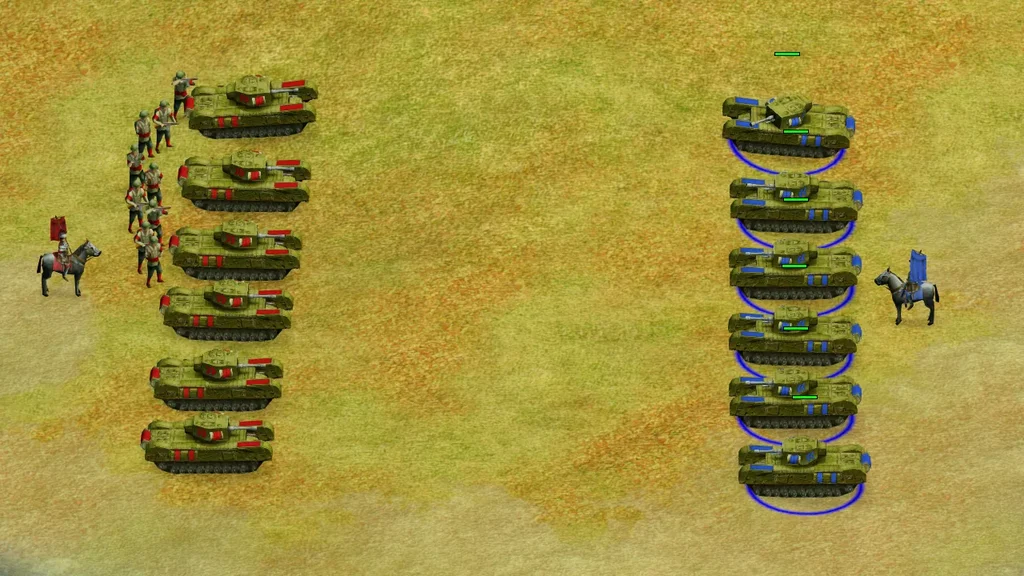
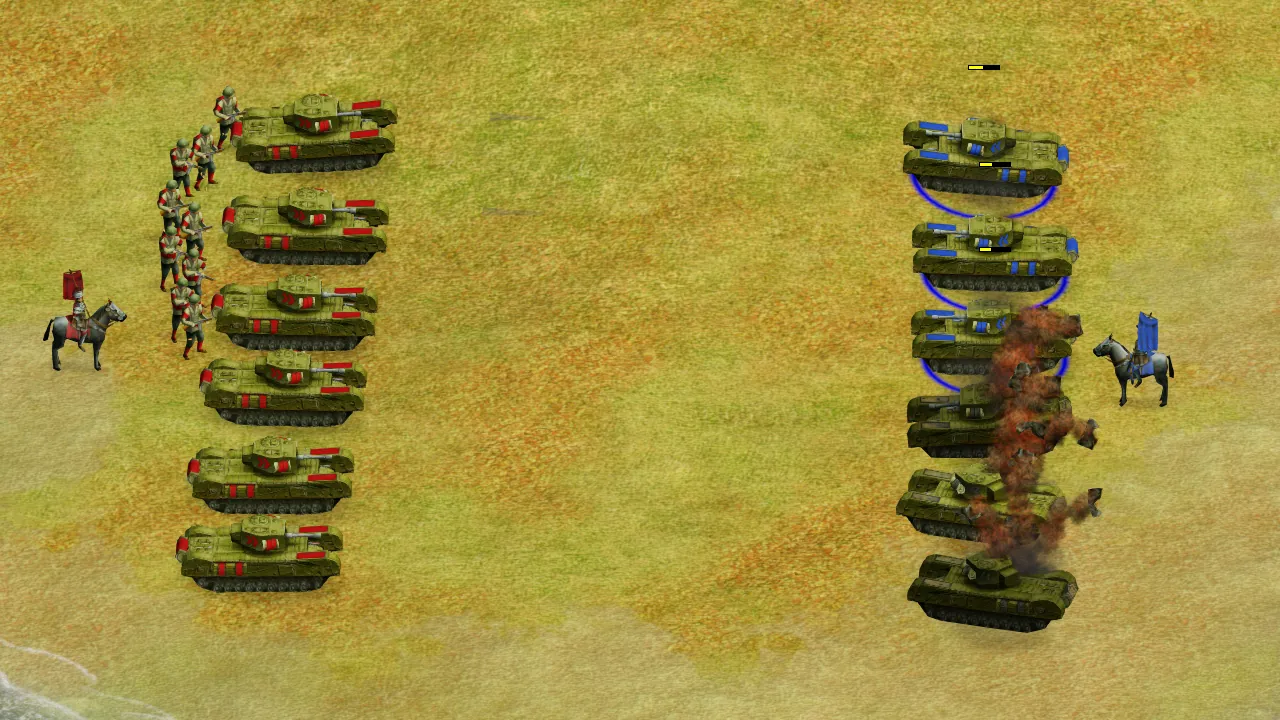
Notice how the tanks being attacked by only another tank have been destroyed, but the tanks being hit by both another tank and a Modern Infantry unit are alive at around 2/5 HP.
There are three things at play here:
- Some units — most notably Heavy Infantry and tanks themselves — deal good damage against tanks.
- Modern Infantry deal fuck all damage against tanks. Assault Infantry (VIII) actually deal less DPS to a Main Battle Tank (VIII) with normal late-game armor bonuses (+8) than Musketeers (V) do.
- RoN’s focus-fire penalty combines the two above points in a dreadful damage-modifying soup.
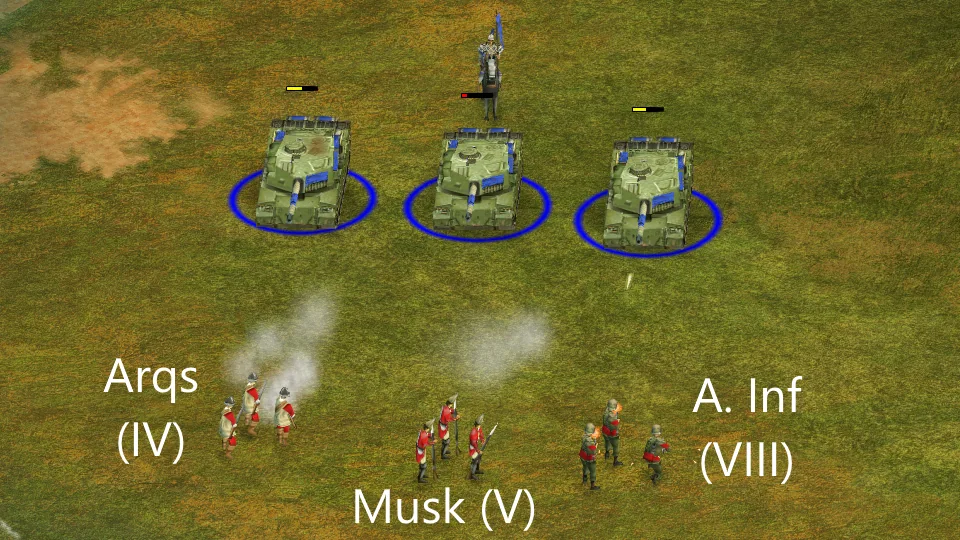
Let’s say there are two different units, that each deal a different amount of damage, focus-firing the same target (like in the side-by-side example further above). If the lower-damage unit of the two causes (due the focus-fire penalty) a damage reduction for the higher-damage unit that exceeds the lower-damage unit’s own damage, the net damage dealt by the two units is lower than the higher-damage unit attacking by itself. This is what you see above: MI reducing the damage of tanks by an amount greater than the damage that they themselves are contributing, causing a net damage decrease.
Thus in the all-too-common MI + tanks vs MI + tanks slugfest, the player that gets their MI to not shoot the enemy’s tanks will be more successful than the player who does, even if those MI don’t shoot the enemy MI. They can literally stand there as a passive meatshield dealing no damage whatsoever and might still contribute more to the fight than if left to attack targets on their own.
(As an aside this doesn’t completely generalise to “never focus a target”, because spreading damage too thin causes damage-per-target to be too low, and thus targets end up dying too slowly — but getting too much into that is beyond the scope of this article.)
2: Late game heavy infantry have the auto-targeting intelligence of a musty potato
When there are multiple targets in attack range, units will normally do a decent job of prioritizing a target that they’re effective against. If you give 8 Riflemen the choice to attack:
- A Light Tank,
- An Armored Car,
- An Anti-tank Rifle squad, or
- A Riflemen squad
They overwhelmingly vote the Anti-tank Rifle squad off of the island,1 despite this not being the closest target for most of the Riflemen in question.
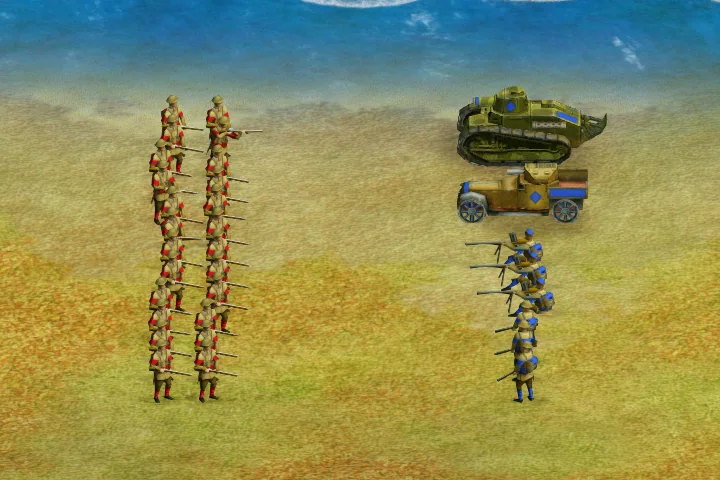
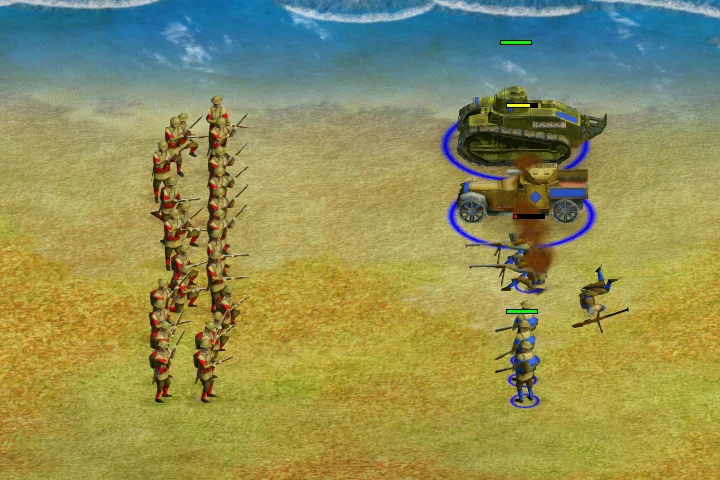
Contrast this with what 9 Anti-tank Rifles do in the same situation (moved closer due to their much lower range):

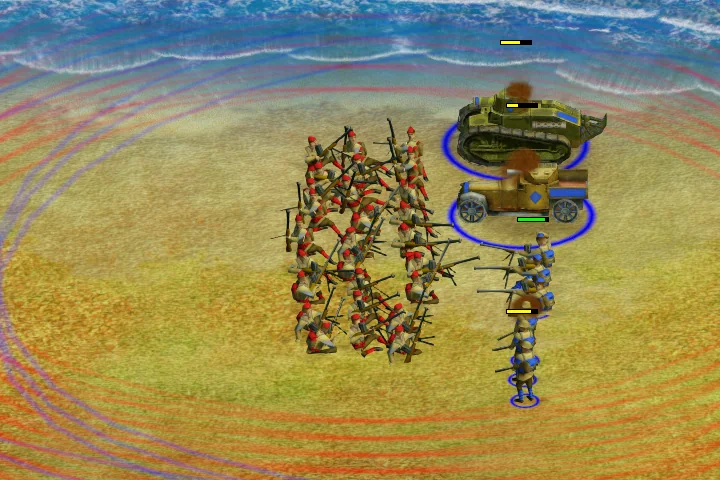
It looks like they mostly let RNGesus choose for them, instead of choosing the target that actually makes the most sense in their circumstances. Although they did do a bit better than evenly-distributed pure randomness, do note that if I get 2 Anti-tank Riflemen to explicitly attack each target (for a total of 8 attackers — one less than before), this is what the damage distribution looks like:
So it’s not so much the Armored Car is more damaged in the prior demonstration because it was strongly prioritized; it actually just takes more damage, and the infantry units just take less damage.
Just to drive home the point, behold the target selection of modern Heavy Infantry in a scaled-up test where the target immediately in front of them is bad, but the target behind that (and in range) is optimal:
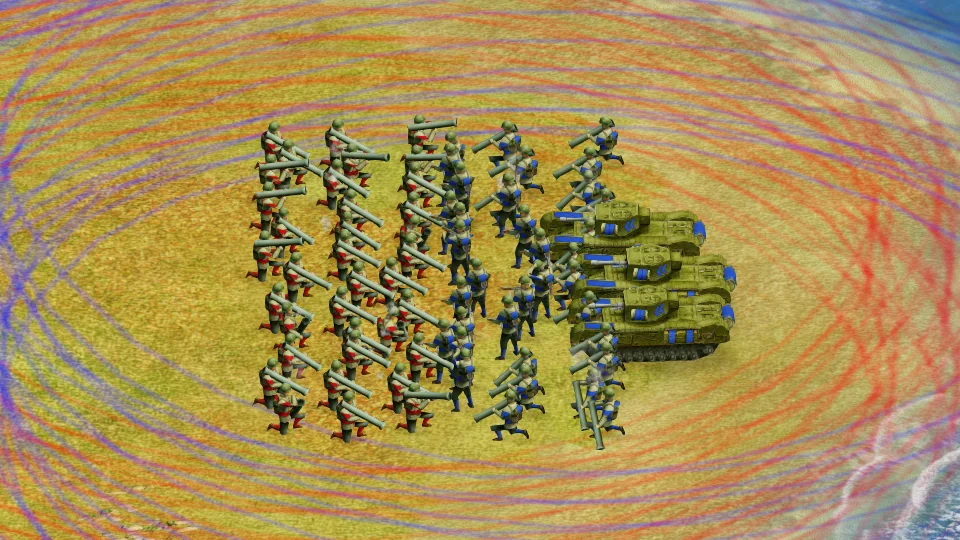

In conclusion, unfortunately modern Heavy Infantry appear to be morons. To make them effective in combat it looks like you must manually micromanage their targets for them, or else they’ll randomly decide to shoot low-value targets just because.
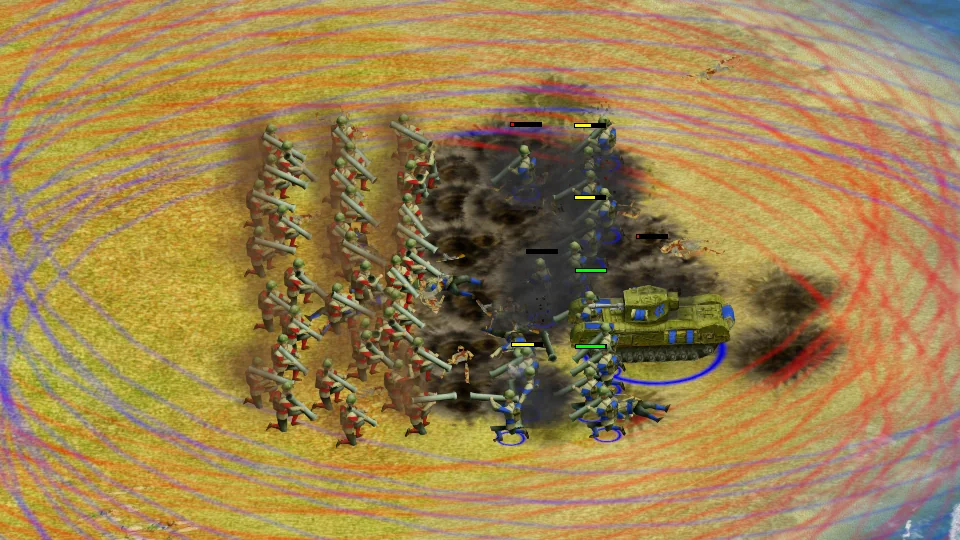
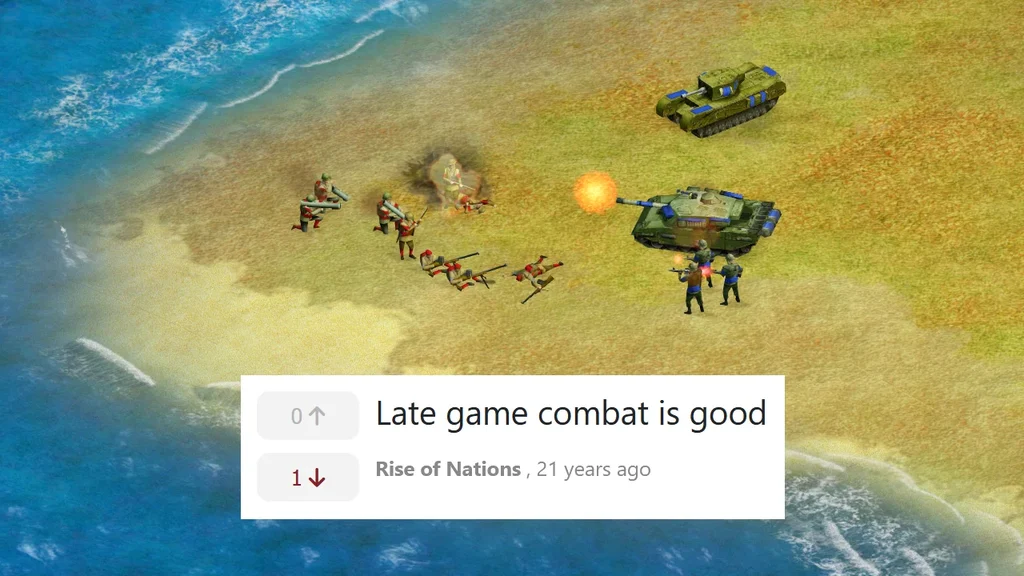
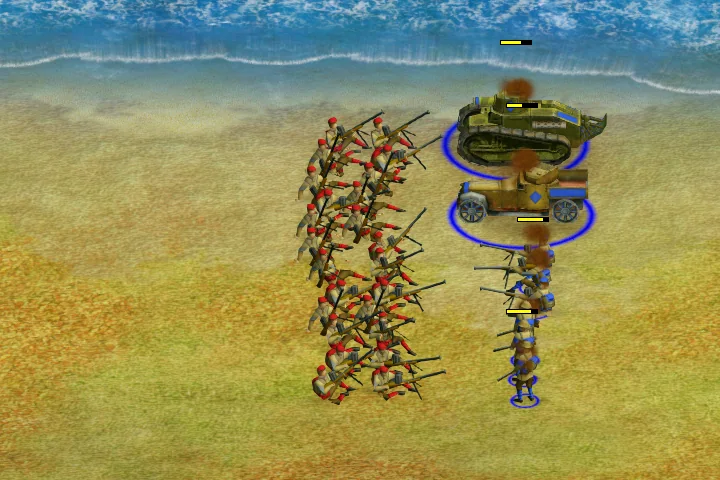
Those problems can be addressed in the Community Balance Patch?
I’ve reduced the effect of the MI vs tanks thing in Alpha 10 with some related changes, but “fixing” it completely basically either requires making MI good against tanks (obviously completely breaking late-game balance lol), or reducing the focus-fire penalty significantly (which has far-reaching implications for combat in all ages).
The second is (as far as I know) a fundamentally hardcoded issue. It might be possible to implement some kind of very convoluted workaround but I don’t think it’s worth my time to explore it because it would be a lot of work without a known outcome. You’ll just have to remember to do target selection manually for late game HI.
Oh, I understand. Is useful to know that about about late game HI.
Another fantastic analysis. I know there are a couple of issues highlighted here, how far would increasing the heavy infantry range go to remedy the problem?
Did not expect musketeers to be more effective against tanks than modern infantry!
It seems unlikely that increasing modern HI’s range would help them much while they’re still automatically selecting targets: in terms of damage dealt (but obviously not damage taken), this is essentially what moving them close to their target (as per the tests) already does.
Range would help with their survivability, but it’s an unfortunate situation where we have to try to somehow balance them around both automatic targeting (low DPS) and manual targeting (high DPS), which is essentially impossible without resolving the underlying target selection itself. If they were given, say, +3 range, their performance with automatic targeting would still be bad (better, but nonetheless poor), but their performance with manual targeting would probably make them overbearing, as modern HI (in range) can kill tanks faster than tanks can kill MI, or MI can kill HI.